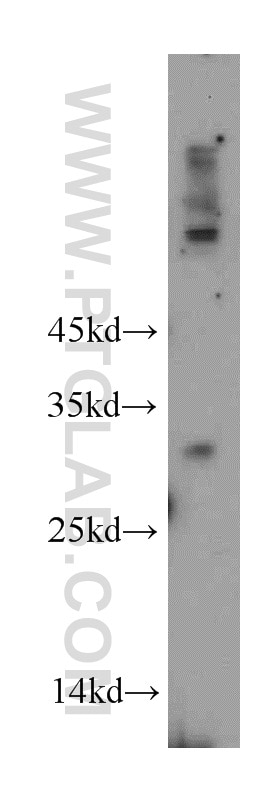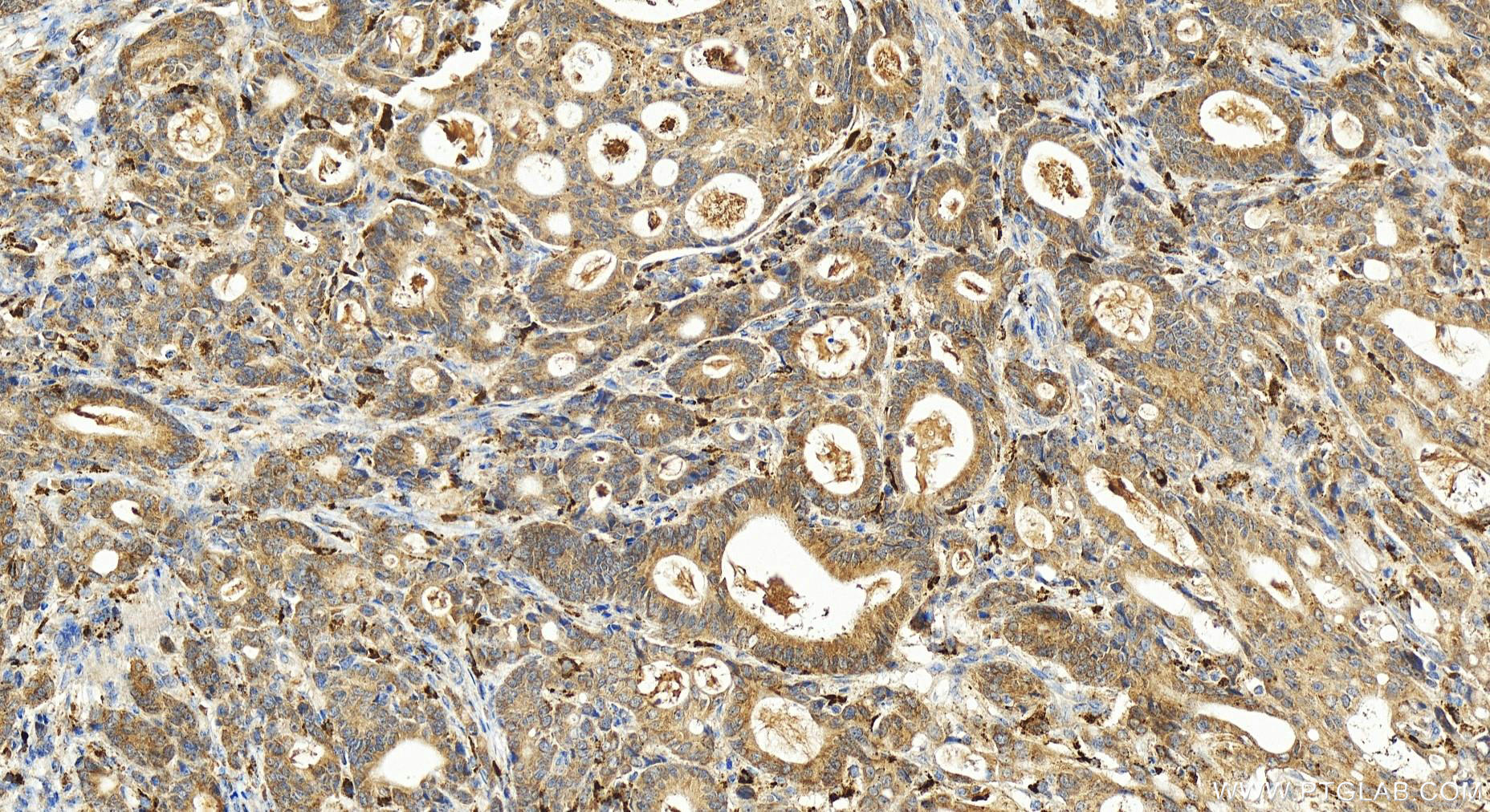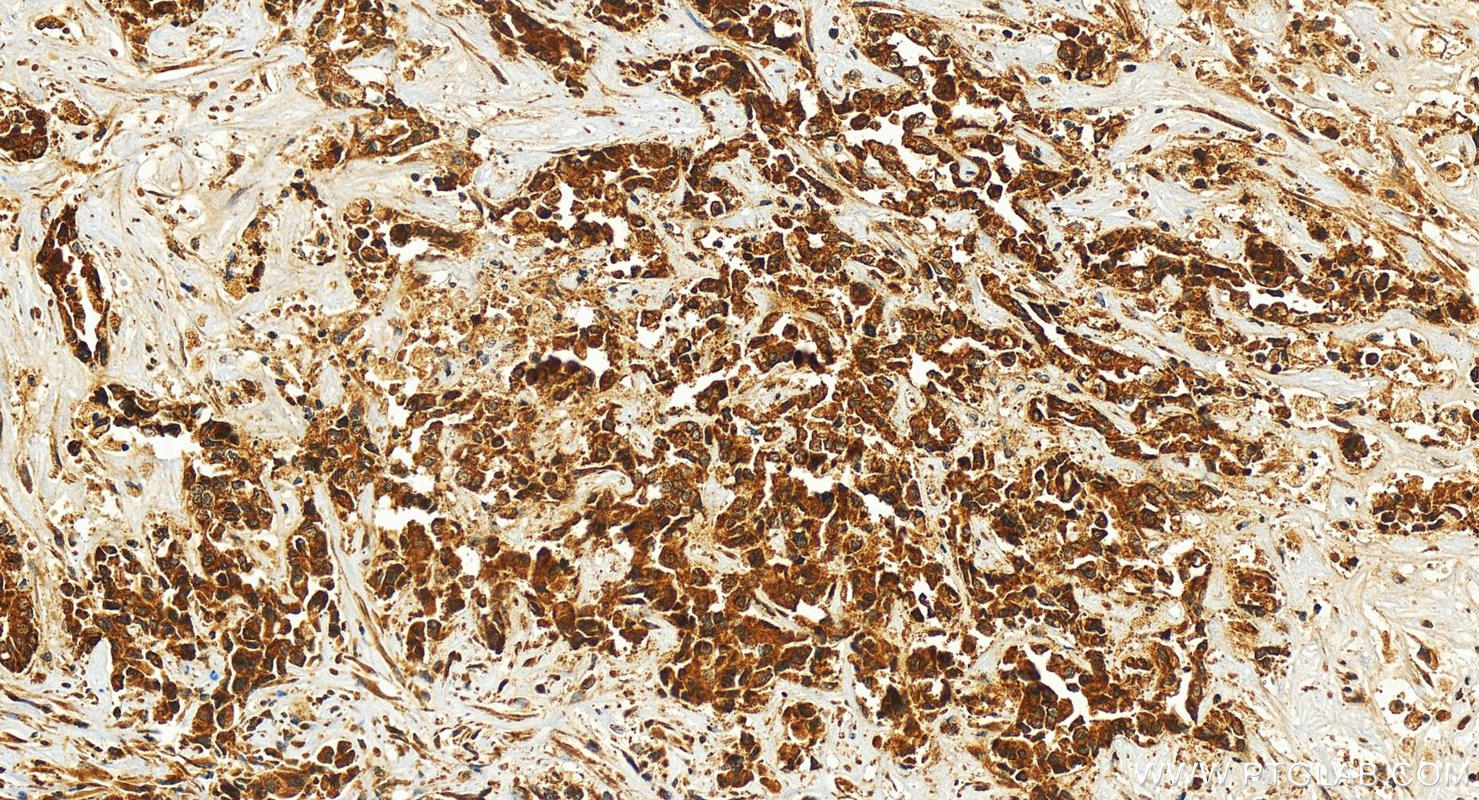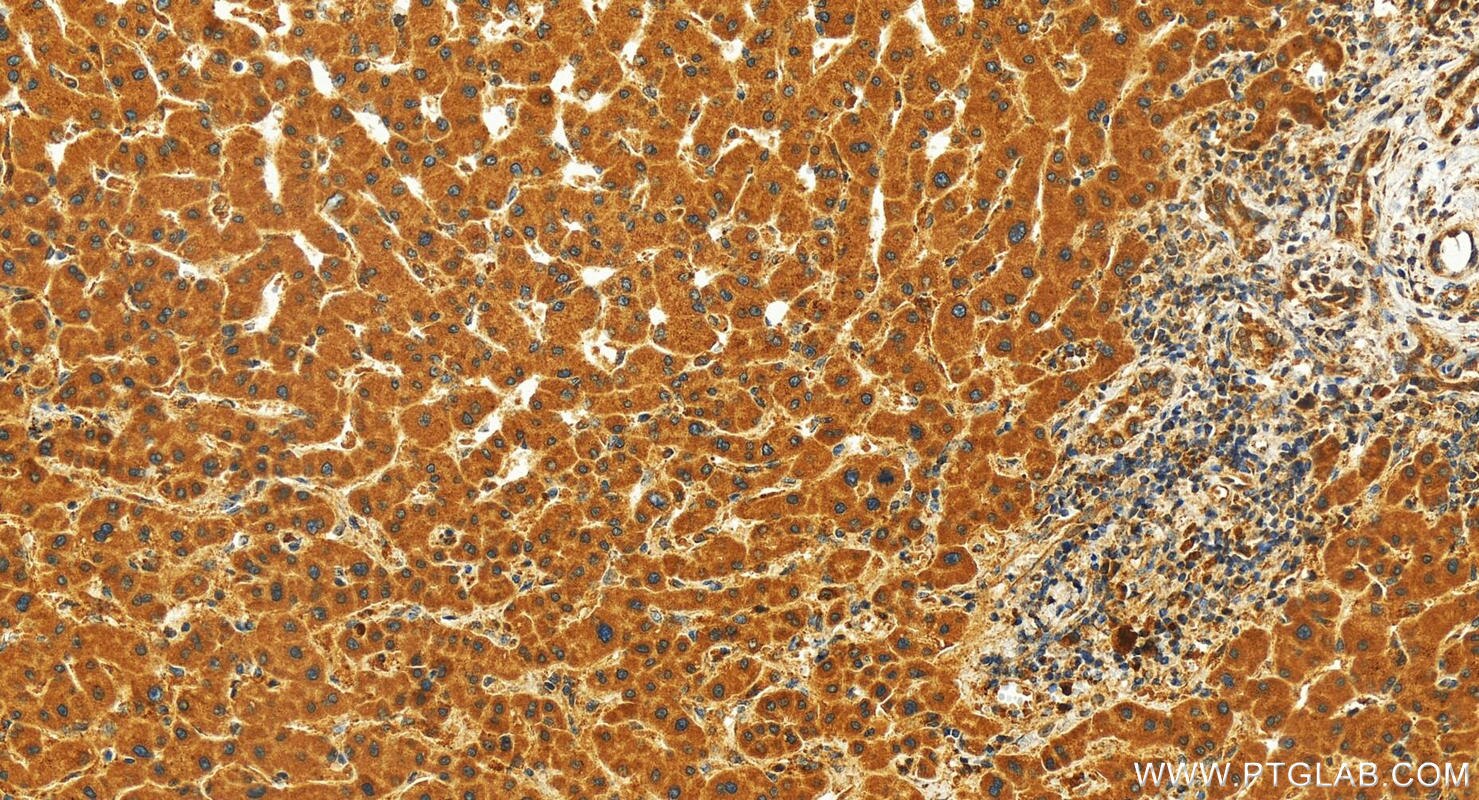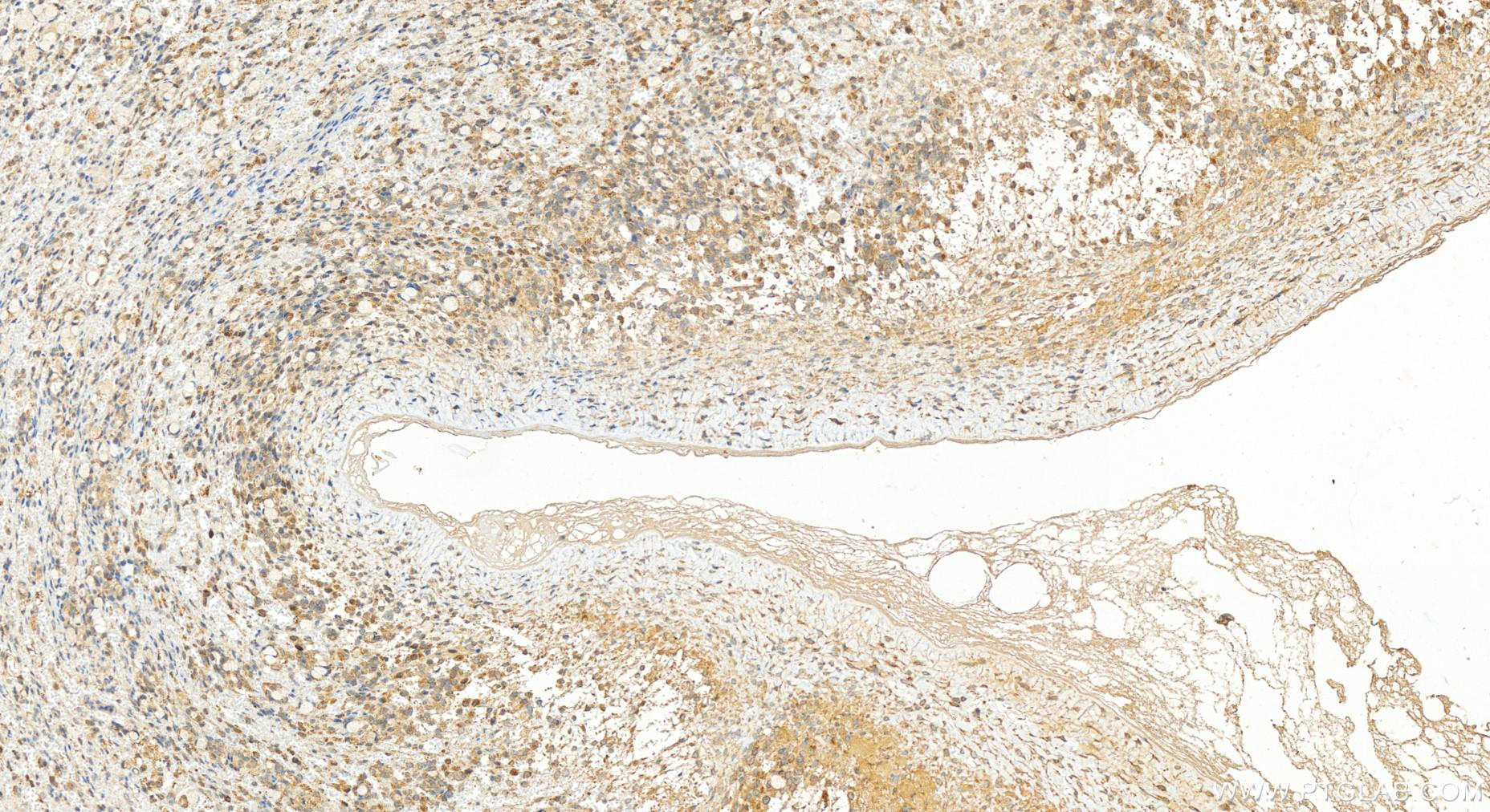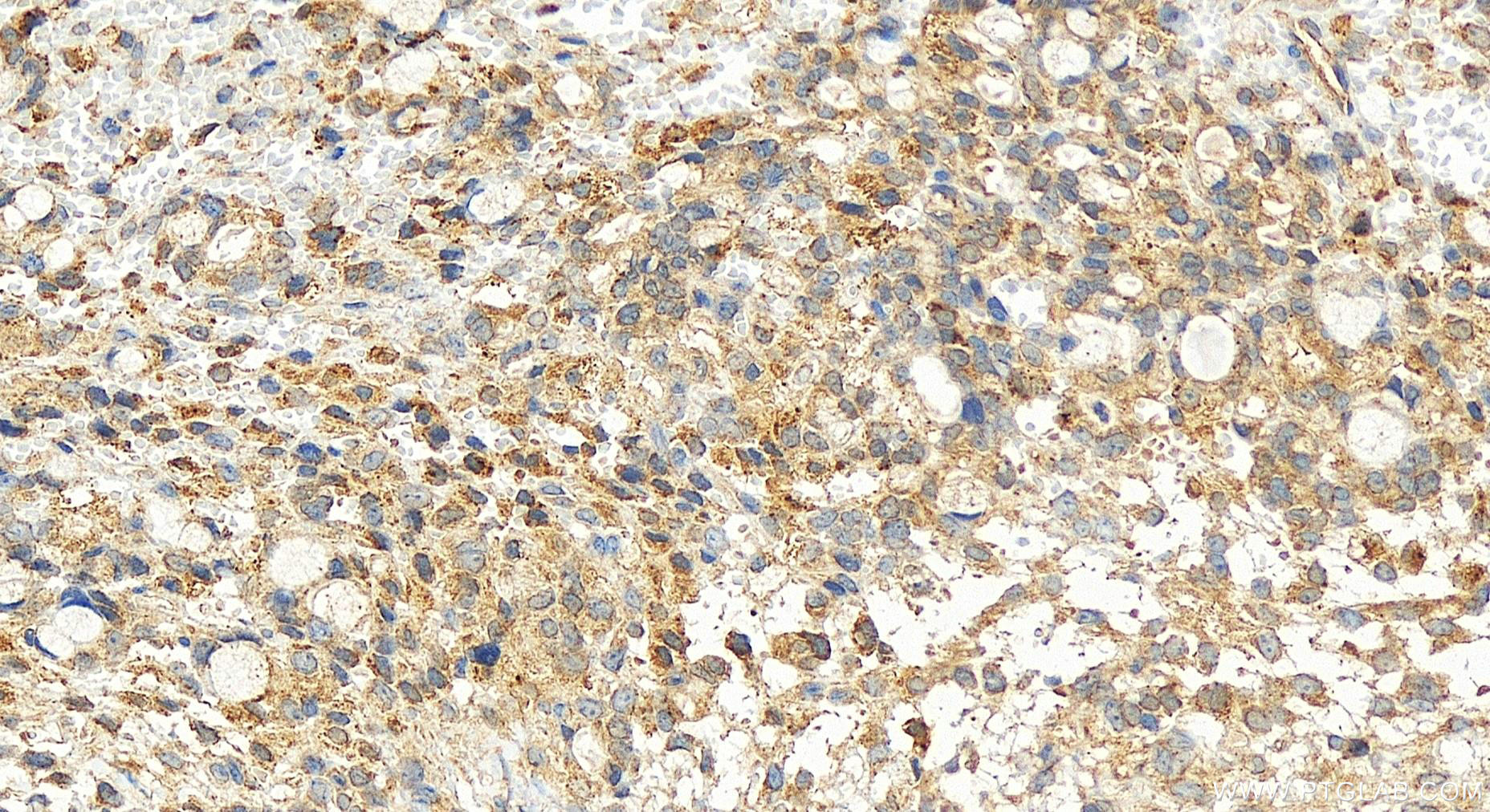Anticorps Polyclonal de lapin anti-KCTD14
KCTD14 Polyclonal Antibody for WB, IHC, ELISA
Hôte / Isotype
Lapin / IgG
Réactivité testée
Humain, souris
Applications
WB, IHC, ELISA
Conjugaison
Non conjugué
N° de cat : 21111-1-AP
Synonymes
Galerie de données de validation
Applications testées
| Résultats positifs en WB | tissu de muscle squelettique de souris, tissu cérébral de souris, tissu d'intestin grêle de souris |
| Résultats positifs en IHC | tissu de cancer de l'estomac humain, human intrahepatic cholangiocarcinoma tissue, human ovary cancer tissue il est suggéré de démasquer l'antigène avec un tampon de TE buffer pH 9.0; (*) À défaut, 'le démasquage de l'antigène peut être 'effectué avec un tampon citrate pH 6,0. |
Dilution recommandée
| Application | Dilution |
|---|---|
| Western Blot (WB) | WB : 1:500-1:2000 |
| Immunohistochimie (IHC) | IHC : 1:50-1:500 |
| It is recommended that this reagent should be titrated in each testing system to obtain optimal results. | |
| Sample-dependent, check data in validation data gallery | |
Informations sur le produit
21111-1-AP cible KCTD14 dans les applications de WB, IHC, ELISA et montre une réactivité avec des échantillons Humain, souris
| Réactivité | Humain, souris |
| Hôte / Isotype | Lapin / IgG |
| Clonalité | Polyclonal |
| Type | Anticorps |
| Immunogène | KCTD14 Protéine recombinante Ag14265 |
| Nom complet | potassium channel tetramerisation domain containing 14 |
| Masse moléculaire calculée | 225 aa, 26 kDa |
| Poids moléculaire observé | 30 kDa |
| Numéro d’acquisition GenBank | BC001929 |
| Symbole du gène | KCTD14 |
| Identification du gène (NCBI) | 65987 |
| Conjugaison | Non conjugué |
| Forme | Liquide |
| Méthode de purification | Purification par affinité contre l'antigène |
| Tampon de stockage | PBS with 0.02% sodium azide and 50% glycerol |
| Conditions de stockage | Stocker à -20°C. Stable pendant un an après l'expédition. L'aliquotage n'est pas nécessaire pour le stockage à -20oC Les 20ul contiennent 0,1% de BSA. |
Informations générales
KCTD14, or potassium channel tetramerization domain containing 14, is a member of the KCTD family of proteins. This family consists of 25 members in humans, many of which are only partially characterized . KCTD14, like other members of the KCTD family, contains a conserved domain known as the BTB (Broad complex, Tramtrak, and Bric-a-brac)/POZ (poxvirus zinc finger) domain, which is crucial for protein oligomerization and establishing protein-protein interactions. KCTD14 has been implicated in various biological functions, and recent research suggests a potential role in cancer. Although not as extensively studied as some other KCTD members, KCTD14 has been noted in database analyses to potentially play a protumor role in ovarian cancer. Specifically, the COSMIC database reports a copy number variation (CNV) gain in 4.5% of ovarian cancers, and the GENT2 database indicates a fold change (FC) of 1.5 in expression, with a p-value less than 0.001, suggesting a possible association with ovarian cancer.
Protocole
| Product Specific Protocols | |
|---|---|
| WB protocol for KCTD14 antibody 21111-1-AP | Download protocol |
| IHC protocol for KCTD14 antibody 21111-1-AP | Download protocol |
| Standard Protocols | |
|---|---|
| Click here to view our Standard Protocols |


